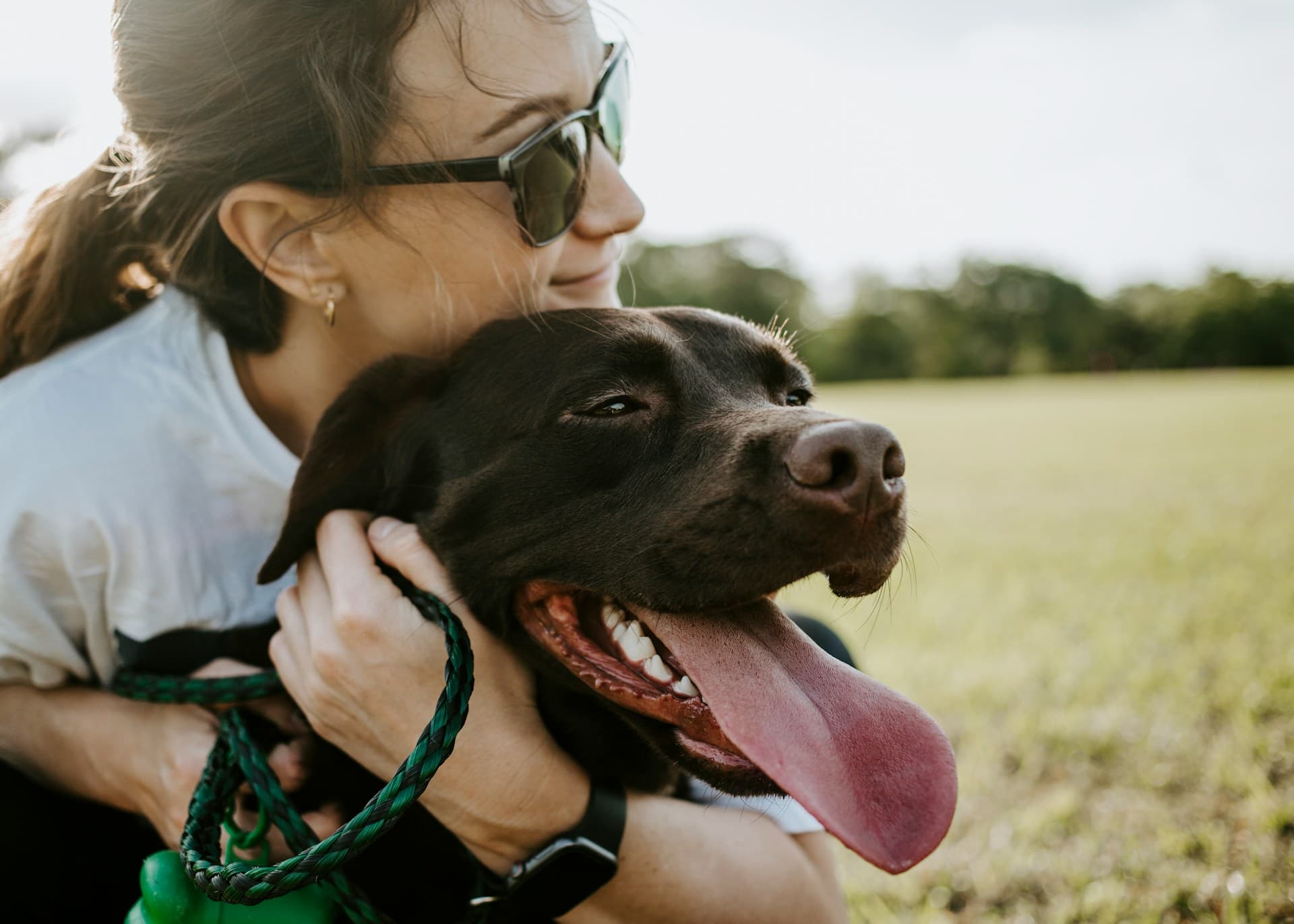Decoding the Signs: When Your Dog Needs Neutering

Introduction
Neutering is a common surgical procedure for dogs, involving the removal of the testicles in males (castration) or the ovaries and uterus in females (spaying). This not only controls the pet population but also has a profound impact on a dog's health and behavior. Knowing the signs that your dog may need to be neutered is crucial for every responsible dog owner. It can help you make informed decisions about your pet's well - being, prevent potential health issues down the line, and ensure a harmonious co - existence between your furry friend and your family, as well as the community. In the following, we will explore the various signs that indicate it might be time to consider neutering your beloved dog.
Behavioral Signs
Aggression and Territorial Behavior
One of the most noticeable behavioral signs that your dog may need to be neutered is increased aggression and territorial behavior. Unneutered male dogs, in particular, often experience a surge in testosterone levels as they reach sexual maturity. This hormonal change can lead them to become more territorial, seeing every new dog or even some humans as potential threats to their claimed space. For example, when on a walk, an unneutered male dog may growl, bark aggressively, or even lunge at other dogs passing by, trying to protect what it perceives as its territory. This territorial aggression isn't limited to other dogs; it can also be directed towards humans. If a delivery person approaches the house or a guest enters, the unneutered dog may show signs of hostility, baring its teeth or giving warning growls.
In addition, when there are female dogs in heat in the vicinity, unneutered males can become extremely aggressive. They may fight with other male dogs over the right to mate with the female, which can lead to serious injuries for both dogs involved. This aggression not only poses a danger to other animals but also makes it difficult for owners to manage their dogs in public places, such as dog parks or on neighborhood walks.
Excessive Mounting
Excessive mounting is another common behavior exhibited by unneutered dogs. This behavior is not only a display of sexual interest but is also strongly influenced by hormonal factors. Unneutered male dogs, especially when they detect the scent of a female dog in heat, will often try to mount other dogs, toys, furniture, or even the legs of their owners. This behavior can be embarrassing for owners, especially when it occurs in front of guests or in public areas.
Mounting behavior is not exclusive to males; female dogs can also exhibit this behavior, although it is less common. For both genders, the behavior can be a sign that the dog's hormones are driving its actions. While mounting can sometimes be a part of normal play behavior in puppies, when it becomes excessive and is accompanied by other signs like restlessness and a strong preoccupation with the act, it's likely related to the dog's unneutered status. This behavior can disrupt the harmony of the household, as it can be off - putting for family members and may lead to damage to household items if the dog is mounting furniture or other objects.
Roaming Urges
Unneutered dogs have a strong natural instinct to roam, primarily driven by their search for a mating partner. This urge can be so powerful that it overrides their usual sense of loyalty and obedience. Owners may notice that their unneutered dog is constantly trying to escape from the yard or the house. They may dig under fences, jump over barriers, or scratch at doors and windows in an attempt to get out. Some dogs will even wait patiently by the door, ready to bolt out the moment it's opened.
Once outside, these dogs can wander far from home, putting themselves in a great deal of danger. They may encounter traffic, get lost, be attacked by other animals, or fall victim to cruel humans. For instance, a male dog in search of a female in heat may cross busy streets without regard for oncoming cars, increasing the risk of being hit. The longer a dog is gone, the more difficult it becomes to find, and the chances of a safe return decrease significantly. Owners often find themselves in a state of worry and panic when their unneutered dog goes missing due to this strong roaming urge.
Health - related Signs
Enlarged Prostate in Male Dogs
In unneutered male dogs, an enlarged prostate is a common health issue that becomes more prevalent as they age. The prostate gland, which is an important part of the male reproductive system, can grow in size due to hormonal imbalances. As the prostate enlarges, it can put pressure on the surrounding tissues, especially the urethra, which is the tube that carries urine from the bladder out of the body.
This pressure on the urethra often leads to urinary problems. Dogs may experience difficulty in urinating, straining to pass urine, and the flow of urine may be weak or interrupted. In some cases, the dog may also have to urinate more frequently, even during the night, which can disrupt both the dog's and the owner's sleep. Another concerning symptom is the presence of blood in the urine, known as hematuria. This can be a sign of serious internal damage and is a clear indication that something is wrong with the dog's urinary system.
These urinary problems not only cause physical discomfort to the dog but can also lead to more serious health complications if left untreated. For example, chronic urinary retention can cause the bladder to become over - distended, which may lead to bladder infections or even kidney damage over time. The dog's quality of life is severely affected as it may become less active, lose its appetite, and show signs of distress due to the discomfort associated with urination.
Risk of Mammary Tumors in Female Dogs
Female dogs that have not been spayed are at a significantly higher risk of developing mammary tumors. Hormonal fluctuations during the dog's estrous cycles play a major role in this increased risk. As the dog goes through multiple heat cycles, the mammary glands are constantly exposed to high levels of estrogen and progesterone, which can stimulate abnormal cell growth in the mammary tissue.
The symptoms of mammary tumors can be quite noticeable. Owners may first notice a lump or mass in the dog's breast area. These lumps can vary in size, texture, and mobility. Some may be small and firm, while others can grow quite large and become soft or even ulcerated over time. Another common sign is nipple discharge, which can range from a clear fluid to a bloody or purulent substance.
Mammary tumors in dogs can be either benign or malignant. However, even benign tumors can cause problems if they grow large enough, such as interfering with the dog's movement or causing pain. Malignant mammary tumors are particularly dangerous as they can metastasize, or spread, to other parts of the body, including the lungs, liver, and lymph nodes. Early spaying, especially before the first heat cycle, can reduce the risk of mammary tumors by up to 99%. This makes it a crucial preventive measure for female dog owners.
Pyometra in Female Dogs
Pyometra is a serious and potentially life - threatening condition that occurs almost exclusively in unspayed female dogs. It is characterized by the accumulation of pus in the uterus, which is caused by a bacterial infection. During a female dog's heat cycle, the cervix relaxes, allowing bacteria from the vagina to enter the uterus. If the dog's immune system is unable to fight off these bacteria effectively, an infection can develop, leading to pyometra.
The symptoms of pyometra can be quite diverse. Affected dogs often have a fever, as the body tries to fight off the infection. They may also show a significant loss of appetite, becoming disinterested in their food, which can quickly lead to weight loss. Lethargy is another common symptom, with the dog seeming weak and uninterested in its usual activities.
One of the tell - tale signs of pyometra is abnormal vaginal discharge. This discharge can be thick, yellow, or greenish in color and may have a foul odor. In some cases, the discharge may be so copious that it stains the dog's bedding or the floor where it lies. If the condition progresses, the dog may also experience increased thirst and urination, as the body tries to flush out the toxins associated with the infection.
If left untreated, pyometra can be fatal. The infection can spread to other organs, leading to sepsis, a life - threatening condition where the body's immune response to the infection causes widespread inflammation and organ failure. Immediate veterinary intervention, usually in the form of emergency surgery to remove the infected uterus (ovariohysterectomy), is often required to save the dog's life.
Other Considerations
Unwanted Litters
One of the most pressing issues associated with not neutering your dog is the problem of unwanted litters. Unneutered female dogs can become pregnant during their heat cycles, which typically occur every six to twelve months, depending on the breed. If a female dog mates during this time, she can give birth to a litter of puppies, usually ranging from 1 to 12 or more, depending on the breed.
The consequences of unwanted litters are far - reaching. For one, it significantly contributes to the overpopulation of dogs, leading to an increase in the number of stray and abandoned dogs. These homeless dogs often face a harsh existence, struggling to find food, shelter, and protection from the elements and other dangers. They may also be at a higher risk of contracting diseases, being hit by cars, or being the victims of cruelty.
From an owner's perspective, raising a litter of puppies can be an overwhelming and costly experience. Puppies require a great deal of time and attention. They need to be fed frequently, potty - trained, socialized, and taken to the veterinarian for regular check - ups, vaccinations, and deworming. The cost of puppy food, veterinary care, and supplies such as toys, beds, and crates can quickly add up. For example, a bag of high - quality puppy food can cost upwards of $30 per month, and the first set of vaccinations and deworming treatments for a litter of puppies can cost several hundred dollars. If the owner is unable to find suitable homes for all the puppies, they may be left with the burden of caring for multiple dogs, which can be both emotionally and financially draining.
Community and Neighbor Relations
The behavior of an unneutered dog can also have a significant impact on community and neighbor relations. Unneutered dogs are more likely to exhibit behaviors that can be a nuisance or even a threat to others. As mentioned earlier, their increased aggression and territorial behavior can be a problem. An unneutered dog may bark incessantly at passers - by, other dogs, or even small animals, disturbing the peace and quiet of the neighborhood. This constant barking can be particularly annoying, especially during early mornings, late evenings, or at night when people are trying to sleep.
In addition, unneutered dogs may be more likely to escape from their yards or homes in search of a mate. When these dogs are loose in the community, they can pose a danger to themselves and others. They may run into traffic, causing accidents, or they may approach other people or pets in an aggressive manner. This can lead to complaints from neighbors and even potential legal issues if the dog causes harm to someone or their property.
Maintaining good neighbor relations is crucial for both the dog and the owner. A harmonious neighborhood allows the dog to have a more peaceful and enjoyable life, and it also makes the owner's living situation more pleasant. By neutering your dog, you can help reduce the likelihood of these behavior - related problems, contributing to a more friendly and safe community environment for everyone.
Conclusion
In summary, there are numerous signs that indicate your dog may need to be neutered. From behavioral issues such as aggression, excessive mounting, and strong roaming urges, to health - related problems like an enlarged prostate in male dogs, a higher risk of mammary tumors and pyometra in female dogs, these signs should not be ignored. Additionally, the concerns of unwanted litters and maintaining good community relations further emphasize the importance of neutering.
Neutering can have a profoundly positive impact on your dog's life. It can significantly reduce the risk of many serious health problems, extending your pet's lifespan and improving its overall quality of life. Behaviorally, it can lead to a calmer, more obedient dog, making it easier to manage and live with. By preventing unwanted litters, you are also doing your part in reducing the overpopulation of dogs, which is a major issue in many communities.
As a responsible dog owner, it's crucial to pay close attention to your dog's behavior and physical condition. If you notice any of the signs mentioned above, it's highly recommended that you consult a veterinarian. Your vet can provide you with professional advice based on your dog's specific situation, including the best time to neuter, the potential risks and benefits, and post - operative care. Making the decision to neuter your dog is not only beneficial for your pet but also for your family, your community, and the well - being of the dog population as a whole.




